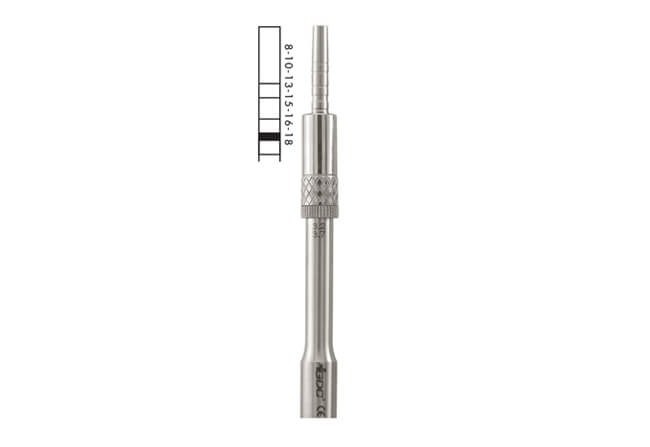Need help? Call us:
+91-9310354377
- ORAL AND MAXILLOFACIAL SURGERY
- ENDODONTIC AND CONSERVATIVE DENTISTRY
- RUBBER DAM CLAMP
- COMPOSITE INSTRUMENTS ANTERIOR & POSTERIOR BLUE
- RUBBER DAM FRAME
- SPOON EXCAVATOR
- COMPOSITE INSTRUMENTS GOLD FLEXI THIN
- ENDO INSTRUMENT KITS
- PLUGGER/CONDENSERS
- RCT PLUGGER
- ART INSTRUMENTS
- PLASTIC FILLING INSTRUMENTS
- RCT SPREADERS & HEAT CARRIERS
- BURNISHER
- ROOT FRAGMENT STEIGLITZ
- CARVER
- COMPOSITE INSTRUMENTS TITANIUM BLUE
- MATRIX RETAINER
- COMPOSITE INSTRUMENTS TITANIUM GOLD
- CHISELS & HOE
- PLACEMENT INSTRUMENTS
- MARGIN TRIMMER
- COMPOSITE INSTRUMENTS SILICON BLACK/BLUE
- AMALGAM CARRIER
- RUBBER DAM FORCEP AND PUNCH
- COMPOSITE INSTRUMENTS ANTERIOR & POSTERIOR BLACK
- DIAGNOSTICS
- PROSTHODONTIC
- ARTICULATOR, PUTTY CUTTER & PLASTER SHEARS
- CALIPER IWANSON
- IMPRESSION TRAY DENTULOUS PERFORATED
- IMPRESSION TRAY DENTULOUS NON-PERFORATED
- WAX & MODELLING CARVER
- IMPRESSION TRAY EDENTULOUS PERFORATED
- PKT CARVERS
- IMPRESSION TRAY EDENTULOUS NON-PERFORATED
- PKT CARVERS COLOR CODED
- IMPRESSION TRAY HALF
- WAX KNIVES & SPATULA
- CROWN REMOVER
- ARTICULATING PAPER HOLDER & CROWN HOLDING FORCEP
- ANTERIOR AND POSTERIOR & ADJUSTABLE
- GINGIVAL CORD PACKER
- PROSTHODONTIC INSTRUMENT KITS
- CEMENT SPATULA & HIDEMANN SPATULA
- IMPRESSION TRAY DENTULOUS PERFORATED PEDO
- ORAL SURGERY
- ROOT ELEVATOR STANDARD
- CHEEK RETRACTORS & TISSUE RETRACTORS
- ROOT ELEVATOR LINDO LEVIAN
- PERIOSTEAL ELEVATOR & BONE FILE
- BONE RONGEURS
- DENTAL SYRINGE
- SCISSORS
- ASSORTED SURGICAL KITS
- TUNGSTEN CARBIDE SCISSOR & NEEDLE HOLDER
- NEW CLINIC SET UP KITS
- EXTRACTION FORCEPS STANDARD
- HEMOSTATS & NEEDLE HOLDERS
- PROXITIP - LUXATING HYBRIDS
- EXTRACTION FORCEPS PREMIUM
- TOWEL CLAMPS, DRESSING & STERLISING FORCEPS
- EXTRACTION FORCEPS PREMIUM #BLACK
- EXTRACTION FORCEPS ERGONOMIC
- ALLIS & TISSUE FORCEPS
- RETRACTOR
- EXTRACTION FORCEPS SECURE
- METAL & FRAZIER SUCTION TUBE
- EXTRACTION FORCEPS PEDO STANDARD
- EXTRACTION FORCEPS ATRAUMATIC
- BONE CHISEL & MALLETS
- ROOT ELEVATOR PREMIUM
- EXTRACTION FORCEPS AMERICAN PATTERN
- EXTRACTION FORCEPS PEDO PREMIUM
- SCALPEL HANDLES
- INSTRUMENTS MANAGEMENT SYSTEM
- PERIODONTAL
- PERIODONTAL CHISEL
- VISTA TUNNELING PROCEDURE
- CORN SUTURE PLIER & POCKET MARKER
- TUNNELLING KNIVES
- TISSUE NIPPER & BLADE HOLDER
- SUB GINGIVAL SCALER
- SUPRA GINGIVAL SCALER
- GRACEY CURETTE
- PERIO PROBES
- MC CALL CURETTES
- PERIOTOMES
- LANGER CURTTES
- PERIODONTAL SCALERS
- COLUMBIA CURETTES
- PERIODONTAL KNIVES
- SURGICAL CURETTE & BONE CURETTE
- PERIODONTAL FILES
- GRACEY CURETTE COLOR CODED
- PERIO INSTRUMENT KITS
- MICRO SURGERY
- ACCESSORIES
- NEW ARRIVAL
- LUXATIP
- IMPLANTOLOGY
- ORTHODONTICS
OSTEOTOMES FLAT STRAIGHT 3.2 – 3.7
OSTEOTOMES FLAT STRAIGHT 3.2 – 3.7
₹3,750.00 Original price was: ₹3,750.00.₹3,000.00Current price is: ₹3,000.00.
Osteotomes are essential surgical instruments used in various orthopedic and dental procedures, particularly in bone cutting, shaping, and manipulation. The flat straight osteotomes, particularly those in the size range of 3.2 to 3.7 mm, are widely utilized in procedures that require precision and controlled bone reshaping. Their design, functionality, and application make them crucial tools for orthopedic surgeons, dental specialists, and other medical professionals performing bone-related surgeries.
A flat straight osteotome is a chiseling tool with a flat, wide blade that allows for the precise removal or reshaping of bone. The blade’s flatness provides a controlled approach to the bone, reducing the risk of accidental damage to surrounding tissues. The straight nature of the instrument offers direct and stable pressure during procedures, making it easier for surgeons to work in confined spaces or delicate areas, especially in dental or maxillofacial surgeries.
The 3.2 to 3.7 mm size range refers to the width of the blade of the osteotome. This size range is versatile and is suitable for procedures that require finer precision or controlled bone removal, such as alveolar bone reshaping in dental implants or corrective osteotomies. The size of the osteotome determines how much bone material can be removed or reshaped in a single pass, making it an important consideration for the surgeon in terms of procedure requirements and patient needs.
The flat straight osteotomes in this size range are crafted from high-quality stainless steel or other durable materials, ensuring longevity and maintaining their sharpness during prolonged use. The precision with which these osteotomes are manufactured allows for their use in delicate procedures where the surgeon needs to have a steady hand and accuracy. The ergonomics of the handle are designed to provide comfort during lengthy surgeries, reducing fatigue and enhancing control during the procedure.
Osteotomies performed with these instruments typically involve procedures such as joint fusions, fracture repairs, or reshaping of the jaw or facial bones. In dental surgery, these instruments are particularly useful when dealing with tooth extractions, bone grafting, or implant placements, as they allow the surgeon to contour the bone around the implants or extraction sites without causing trauma to the surrounding soft tissues.
In addition to their common use in orthopedic and dental surgeries, flat straight osteotomes in this size range are also employed in other medical fields, including podiatry and plastic surgery, for similar bone manipulation tasks. They are versatile instruments that adapt well to the specific needs of different specialties, providing precision in delicate bone-cutting procedures.
In conclusion, flat straight osteotomes in the 3.2 to 3.7 mm size range are indispensable tools for surgeons across various medical disciplines. Their precision, durability, and ergonomic design make them ideal for controlled bone reshaping and removal in a variety of procedures. By offering the ability to manipulate bone with accuracy, these osteotomes enhance the outcomes of surgeries, leading to better patient recovery and overall success.
Recently Viewed Items
ALBRECHT FORCEP MOLAR NO. 2
ALBRECHT FORCEP PREMOLAR NO. 1
LOWER MOLAR No. 73
LOWER MOLAR No. 22S
LOWER MOLAR No. 86
LOWER MOLAR No. 86A
You may add any content here from XStore Control Panel->Sales booster->Request a quote->Ask a question notification
At sem a enim eu vulputate nullam convallis Iaculis vitae odio faucibus adipiscing urna.








Reviews
There are no reviews yet.